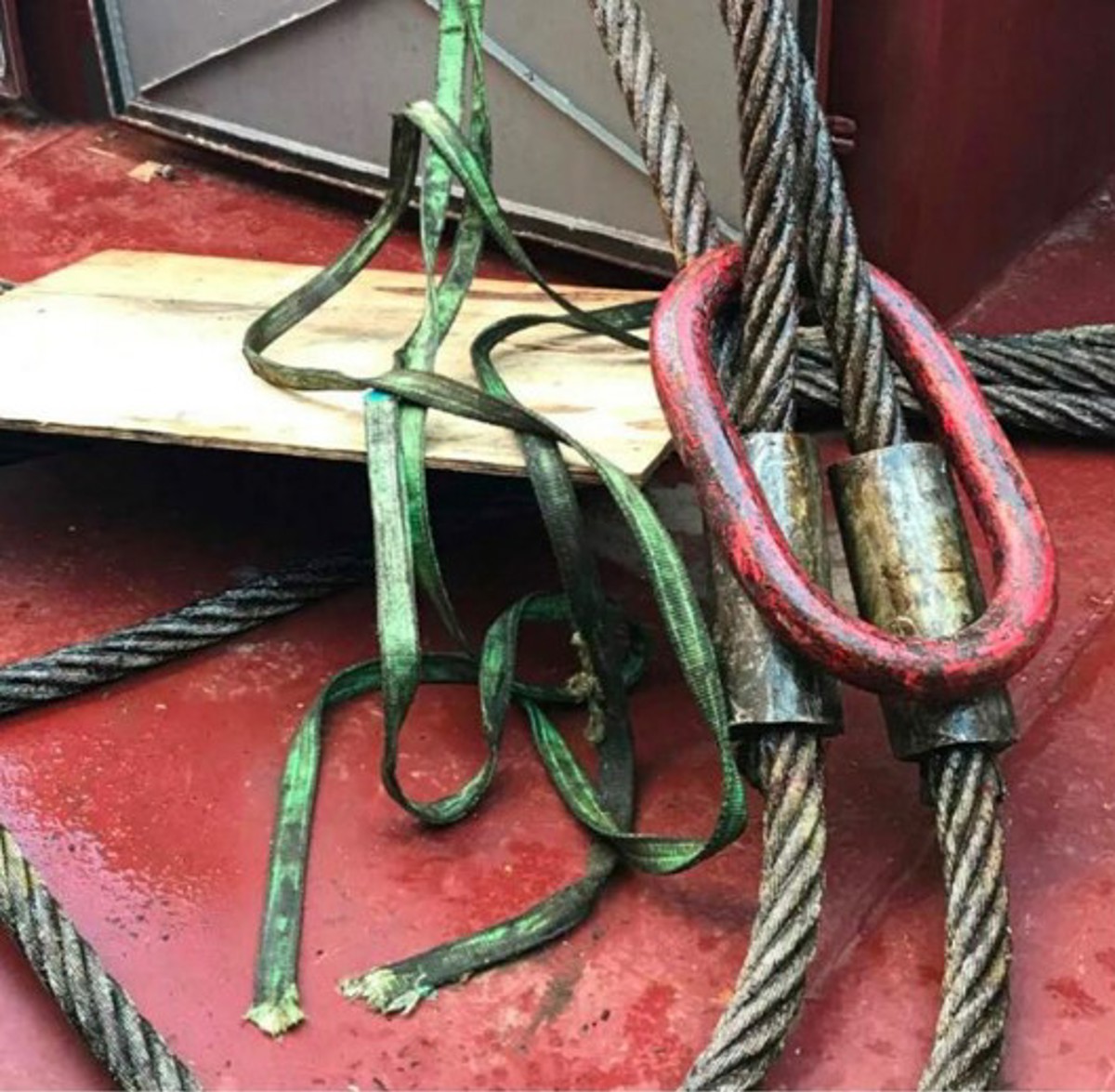Snagged load, a sling snaps, dropped objects: persons injured
- Safety Flash
- Published on 1 October 2021
- Generated on 15 December 2025
- IMCA SF 27/21
- 2 minute read
Jump to:
The Britannia P&I Club has shared Incident Case Study No.9 relating to how two crew members on a general cargo ship were injured when a suspended load fell and struck them.
This is an important re-iteration of the ZEA Servant incident of 2 March 2019 investigated by the UK Marine Accident Investigation Branch (MAIB). This was published as part of IMCA SF 26/20.
What happened?
The incident occurred during the movement of the ship’s hatch covers. The suspended load was lifting gear – two slinging sets; each set weighing 0.6t and consisting of two 17m long, 52-millimetre (mm) diameter, wire rope legs joined together with a master link. Each wire leg had a shackle attached to an eye at the lower end. The gear was to be used to move the ship’s hatch covers.
During the lifting operation, a shackle at the lower end of the load became snagged. The supervising officer immediately instructed the crane driver to stop, but at the same time the fibre sling parted and the lifting gear fell to the deck, striking the A/Bs who were close below. One of the A/Bs suffered a severe head injury while the other suffered a minor hand injury. Both A/Bs were transferred to hospital.

What went wrong?
The ship’s Safety Management System (SMS) did not contain a specific risk assessment or a procedure for the stowage and handling of the lifting gear, nor any guidance for the conduct of a lifting plan and the identification of fall zones.
As there was no procedure to follow, the crew had adopted their own method of carrying out the lifting operation. The crew had used the same method on at least five previous occasions and had experienced similar snagging events. When these had occurred, the deck crew had manually freed the gear after the crane had stopped hauling.
On this occasion we focus on “snag”.
Related Safety Flashes
-
IMCA SF 07/21
4 March 2021
-
-
IMCA SF 02/21
4 January 2021
-
IMCA SF 29/20
9 October 2020
-
IMCA SF 05/20
13 February 2020
-
-
IMCA SF 05/19
20 March 2019
-
-
IMCA SF 23/18
2 October 2018
-
-
IMCA SF 08/18
11 April 2018
-
-
IMCA SF 15/17
15 June 2017
-
-
IMCA SF 22/16
1 September 2016
IMCA Safety Flashes summarise key safety matters and incidents, allowing lessons to be more easily learnt for the benefit of the entire offshore industry.
The effectiveness of the IMCA Safety Flash system depends on the industry sharing information and so avoiding repeat incidents. Incidents are classified according to IOGP's Life Saving Rules.
All information is anonymised or sanitised, as appropriate, and warnings for graphic content included where possible.
IMCA makes every effort to ensure both the accuracy and reliability of the information shared, but is not be liable for any guidance and/or recommendation and/or statement herein contained.
The information contained in this document does not fulfil or replace any individual's or Member's legal, regulatory or other duties or obligations in respect of their operations. Individuals and Members remain solely responsible for the safe, lawful and proper conduct of their operations.
Share your safety incidents with IMCA online. Sign-up to receive Safety Flashes straight to your email.